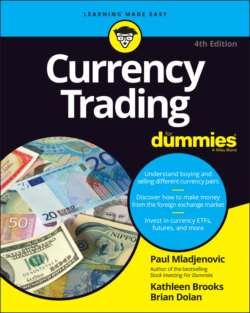Читать книгу Currency Trading For Dummies - Kathleen Brooks - Страница 45
RISK ON/RISK OFF: WAX ON, WAX OFF
ОглавлениеOne of the first things new clients ask is what risk on/risk off means. This is a piece of financial market jargon that all traders should know, because it can determine the direction of a currency. Risk on/risk off refers to changes in investment behavior in response to global economic conditions. For example, when risk is perceived as being low, risk on/risk off states that investors tend to engage in higher-risk activities; in contrast, when the risks are perceived as high, investors tend to move toward lower-risk investments.
Risky currencies include emerging markets and some of the less liquid G10 currencies, such as the Scandis (the Norwegian krone and Swedish krona), CAD, AUD, and NZD. Interestingly, most of the higher-risk currencies are also the currencies of commodity producers. According to risk on/risk off, these currencies should fall when risk is perceived as being high.
In contrast, the JPY, the CHF, and, occasionally, the USD are considered safe havens and tend to be bought during periods when risk aversion is high. The JPY is probably the most-famous safe haven; it can rally when the risk is centered in Japan. For example, after the 2011 Japanese tsunami, the yen surged.
